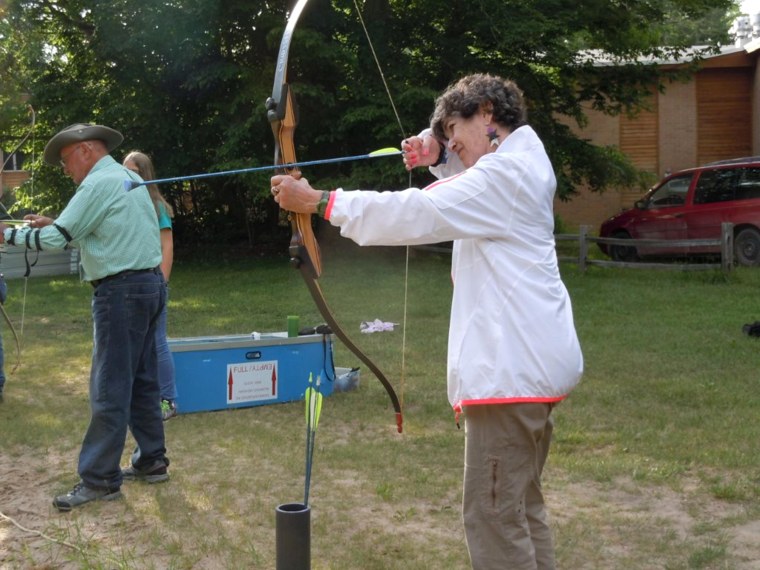Steroid shots given to millions of Americans every year for a certain painful back condition may be unnecessary, researchers reported Wednesday. The cheap painkiller injected to make the shots more bearable seems to do the trick on its own.
The steroids include the type from a contaminated batch blamed for sickening 750 people with a rare type of fungal meningitis in 2012, killing 64 of them and leaving many permanently disabled.
Sign up for top Health news direct to your inbox.
The study raises as many questions as it answers, because none of the volunteers got a placebo treatment — a shot with nothing in it at all. But it may provide a glimpse at why U.S. healthcare costs so much: If millions are getting this treatment they may not even benefit from, what other wasteful treatments are being given?
The researchers were asked to find out if giving people a steroid for a condition called spinal stenosis was worthwhile. It’s a wear-and-tear injury associated with aging. It puts pressure on the spinal cord and can cause pain and numbness in the back and legs.
More than 2 million people a year on Medicare alone get steroid injections, a quarter of them for spinal stenosis. Millions more get them using private insurance. They cost around $600 a pop.
Patients get an injection if the numbing agent lidocaine first because injecting the steroid can be painful. The U.S. Agency for Healthcare Research and Quality asked a team led by Dr. Janna Friedly of the University of Washington to see if the steroid added anything to the lidocaine alone.
It didn’t seem to. Friedly’s team assigned 400 people with spinal stenosis to randomly get either lidocaine plus a steroid, or lidocaine alone. The patients didn’t know which treatment they were getting.
“Patients in both treatment groups had decreased pain and improved function," Friedly’s team reported in the New England Journal of Medicine.
One of them was Bonnie Merenstein of Denver. “I didn’t know what I had had while I was in the trial,” Merenstein told NBC News. “I called and they said ‘You were part of lidocaine group.’ I said: ‘You’ve got to be kidding!’ It just blew me away.”
“I called and they said ‘You were part of lidocaine group.’ I said: ‘You’ve got to be kidding!’ It just blew me away.”
The lidocaine alone greatly helped the leg pain and numbness that had gradually slowed Merenstein, 73, over the past dozen years or so. “Amazingly, I had tremendous results,” she said. “I don’t have as much pain my legs. My legs are not going numb as frequently, and when they do get numb I can push through the numbness and it goes away. Years ago, that wouldn’t have happened.”
It’s freed her up to do things she hadn’t done in years. “I’m amazed at some of the things I can do. I did a 12.5 mile bike ride recently. Twelve years ago they told me never to ride my bike again,” Merenstein said. “Now I want to run out and buy a bike.”
The study doesn’t show that all steroid injections are a waste of time, but it adds up to many people, said Friedly. “People with spinal stenosis represent a large number of patients who are getting this injection, and this study shows that adding the steroid really doesn’t help. We didn’t find any significant benefit from adding the steroid,” she said.

The finding raises the immediate question of whether the 750 sickened during the fungal meningitis outbreak were getting a treatment they even needed. There’s new legislation that gives the Food and Drug Administration more power over the types of pharmacies that made the contaminated drug but it doesn’t answer the question about whether the treatments were needed in the first place.
“If you don’t have to put something with side effects into your body why would you do that?” Merenstein asked.
The study suggests that, at the very least, doctors shouldn’t keep giving the shots if they are not helping, says Dr. Frank Cammisa, Chief of the Spine Service at Hospital for Special Surgery in New York, who was not involved in the research.
“What this study shows clinically is you can try one injection,” Cammisa told NBC News. “If it doesn’t give significant relief, it’s not worth a second or third shot. A lot of insurance companies require at least one, and as many as two or three shots before approving surgery,” he added.
“This will definitely change practice: You may do one injection, but if doesn’t work, you won’t continue to do more.”
“This will definitely change practice: You may do one injection, but if doesn’t work, you won’t continue to do more.”
Dr. Gunnar Andersson of Rush University in Chicago agreed. “I think there are more injections than there should be,” he said. “I also don’t think injections should be repeated as often as they are. Some get 10-12 a year,” added Andersson, who wrote a commentary on the findings.
“The North American Spine Society recommends that if you don’t respond after two injections, you shouldn’t have additional injections. I think that’s a reasonable approach, but in medicine we sometimes say that when you have a hammer everything looks like a nail.”
In theory, the lidocaine should provide immediate relief, while the idea of the steroid is to act slowly over time,” Andersson said. “The unknown part is why would lidocaine have a long-term effect? There are a couple of potential reasons,” he added.
“One is that you’re injecting a volume of something, and that volume is pushing tissue to the side, no longer irritating the nerve root which recovers and feel better. The second is you have a patient in pain, and you’re breaking the pain cycle. The body is capable of rewiring itself.”

Some migraine studies support this second idea — if the cascade of pain can be interrupted early, the migraine often goes away or isn’t as painful.
It’ll take another study to answer that question — perhaps comparing lidocaine injections to injections of saline, or perhaps to a shot in which nothing is injected at all. “Not having a placebo group means you can’t make any conclusion whether an injection of something is helpful or not, because you don’t know that,” Cammisa said. “Maybe an injection of something is beneficial or maybe it’s not.”
Friedly said the aim of the study was simply to see if the steroids added anything to the lidocaine. “We chose not to include a true sham procedure — a true placebo — because this was a comparative effectiveness trial. There are some people who will do just lidocaine injections,” she said.
“There will be people who will say that potentially the lidocaine is effective, and people should consider getting lidocaine injection. We do anticipate that there will be some controversy about what the effect of lidocaine was.”